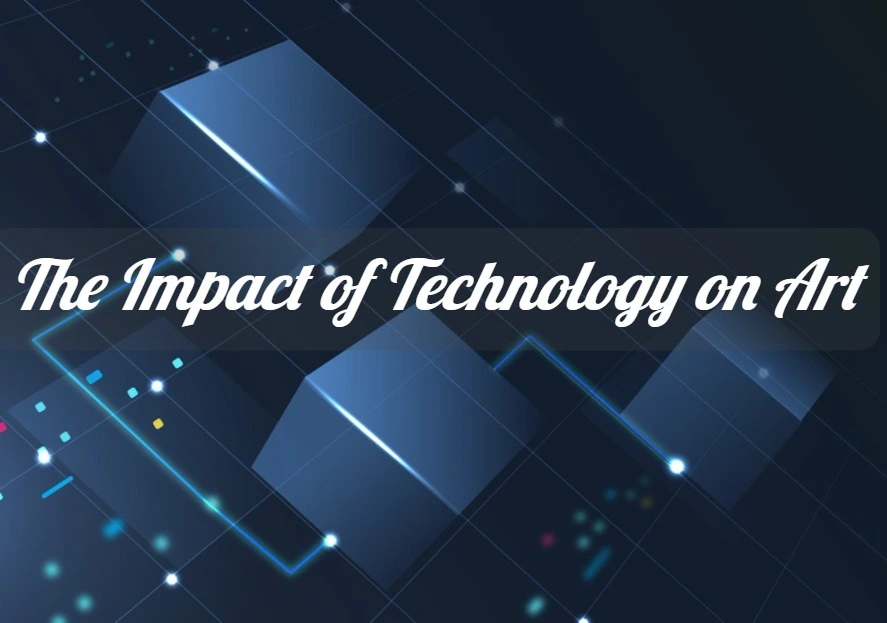How digital art is changing the art world in 2023?
Technology has had a significant impact on the art world, particularly in the realm of digital art. With the rise of digital tools and software, artists now have access to new mediums and techniques that were not possible before. Here are some ways in which digital art is changing the art world:
New forms of expression:
Digital art has opened up new forms of artistic expression, such as interactive installations, generative art, and virtual and augmented reality experiences. Artists can create immersive and interactive experiences that engage the viewer in new and exciting ways.
Democratization of art
Digital tools have made it easier for artists to create and distribute their work, which has led to a more democratized art world. Social media platforms like Instagram and TikTok allow artists to share their work with a global audience, bypassing traditional gatekeepers like galleries and museums.
New revenue streams:
Digital art has also created new revenue streams for artists, such as non-fungible tokens (NFTs) and blockchain technology. NFTs are unique digital assets that can be bought and sold, allowing artists to monetize their digital work in a new and innovative way.
Preservation and conservation:
Digital art has also raised questions about how to preserve and conserve it. Unlike traditional art forms, digital art is often ephemeral and can be lost or damaged if not properly stored or backed up. This has led to a growing interest in digital preservation and conservation efforts.
Collaboration:
Technology has made it easier for artists to collaborate on projects and exchange ideas. Artists can now work together in real-time, even if they are located in different parts of the world. This has led to the emergence of new art collectives and collaborations that bring together artists from diverse backgrounds and disciplines.
Accessibility:
Digital art has also made art more accessible to a wider audience. Online exhibitions, virtual reality experiences, and other digital platforms allow people to experience art from the comfort of their own homes. This has opened up the art world to people who may not have had access to traditional art spaces.
New challenges:
While digital art has brought many opportunities, it has also created new challenges for artists and the art world as a whole. For example, questions around ownership and authorship can arise when digital artworks are easily copied and distributed online. Additionally, the role of the curator in digital art exhibitions and collections is still being defined.
Blurring the lines between traditional and digital art:
With the rise of digital tools and techniques, the line between traditional and digital art is becoming increasingly blurred. Many artists are incorporating digital elements into their traditional artwork, while others are using traditional techniques to create digital art. This has led to the emergence of new hybrid art forms that combine traditional and digital mediums.
Increased experimentation:
Digital art has allowed artists to experiment with new techniques and mediums in ways that were not possible before. For example, artists can now use 3D printing, motion graphics, and other digital techniques to create artworks that were once impossible to create by hand.
New audiences:
Digital art has opened up the art world to new audiences, particularly younger generations who are comfortable with technology and digital media. This has led to a shift in the way art is consumed and appreciated, with many younger people gravitating towards digital and interactive art forms.
Greater experimentation with color and light:
Digital tools have allowed artists to experiment with color and light in new ways. For example, artists can use digital projectors and LED lights to create immersive installations that use light and color to transform spaces.
New modes of storytelling:
Digital art has also opened up new modes of storytelling, particularly in the realm of interactive and immersive experiences. Artists can create virtual and augmented reality experiences that allow viewers to enter into new worlds and narratives in ways that were once impossible.
Greater collaboration between artists and technologists:
Digital art has led to greater collaboration between artists and technologists, with many artists working closely with programmers, designers, and other technologists to create their work. This has led to new forms of interdisciplinary collaboration and innovation.
A new kind of art criticism:
The rise of digital art has also led to a new kind of art criticism that takes into account the unique properties of digital art. Critics are now considering issues such as interactivity, algorithmic processes, and the relationship between the digital and physical worlds in their evaluations of digital art.
A new kind of audience engagement:
Digital art has opened up new possibilities for audience engagement, with many digital artworks inviting the viewer to actively participate in the creation of the artwork. This has led to a new kind of audience experience that is more participatory and immersive than traditional forms of art.
In conclusion:
Digital art is having a profound impact on the art world, creating new forms of expression, new revenue streams, and new opportunities for collaboration and experimentation. While there are challenges associated with the rise of digital art, there is no doubt that it is transforming the way we create, consume, and appreciate art in the 21st century. Overall, digital art has had a profound impact on the art world, allowing artists to explore new forms of expression, democratizing the art world, creating new revenue streams, and raising important questions about preservation and conservation.


